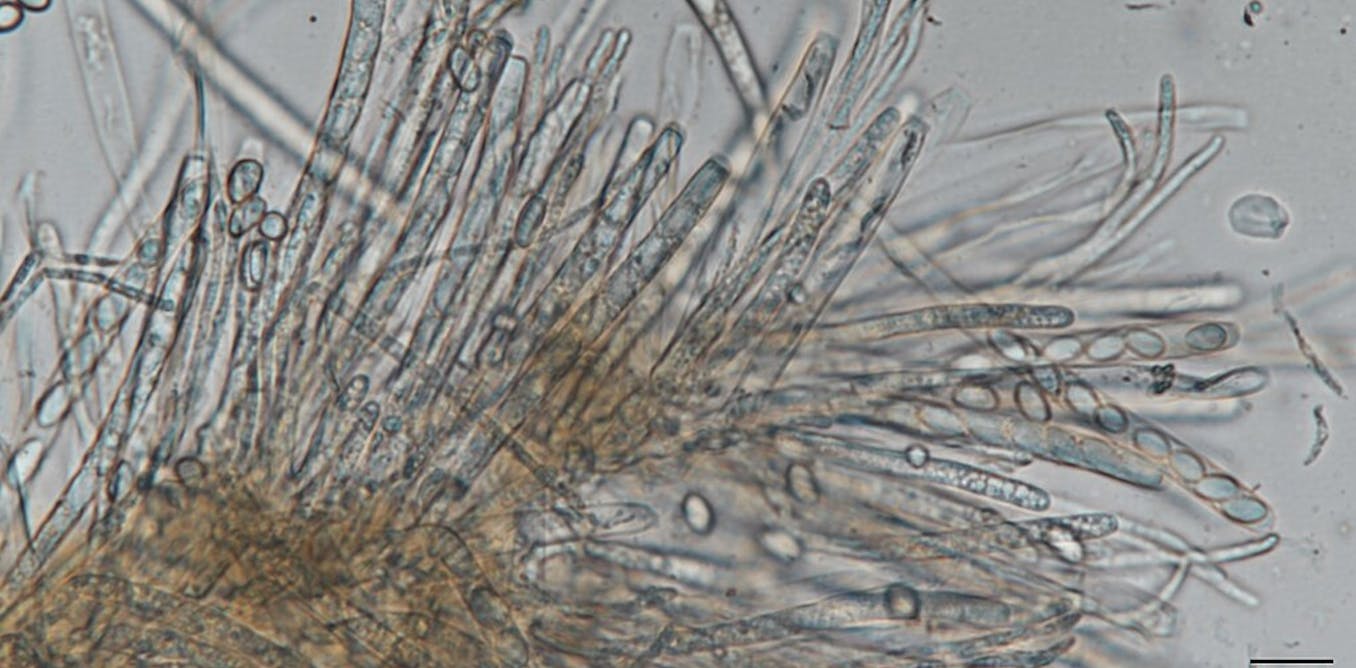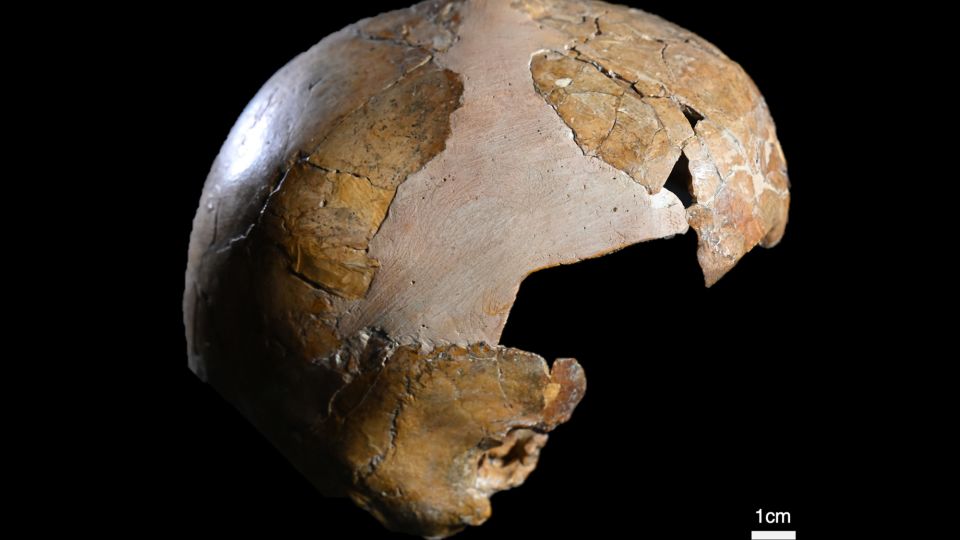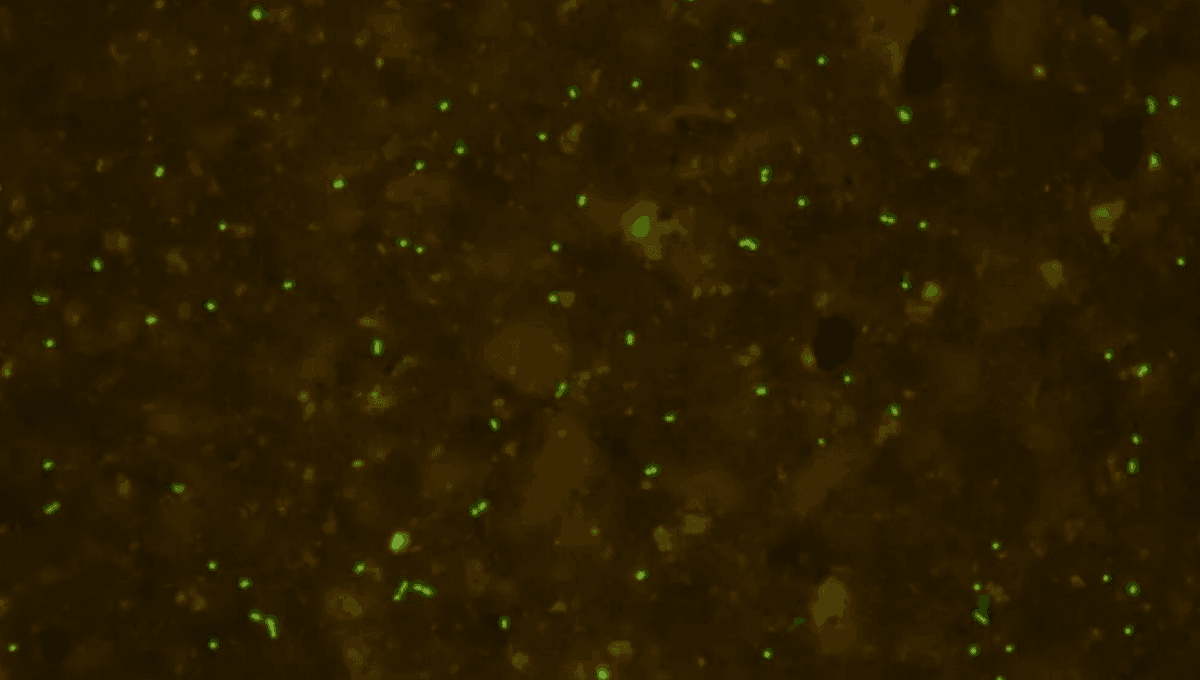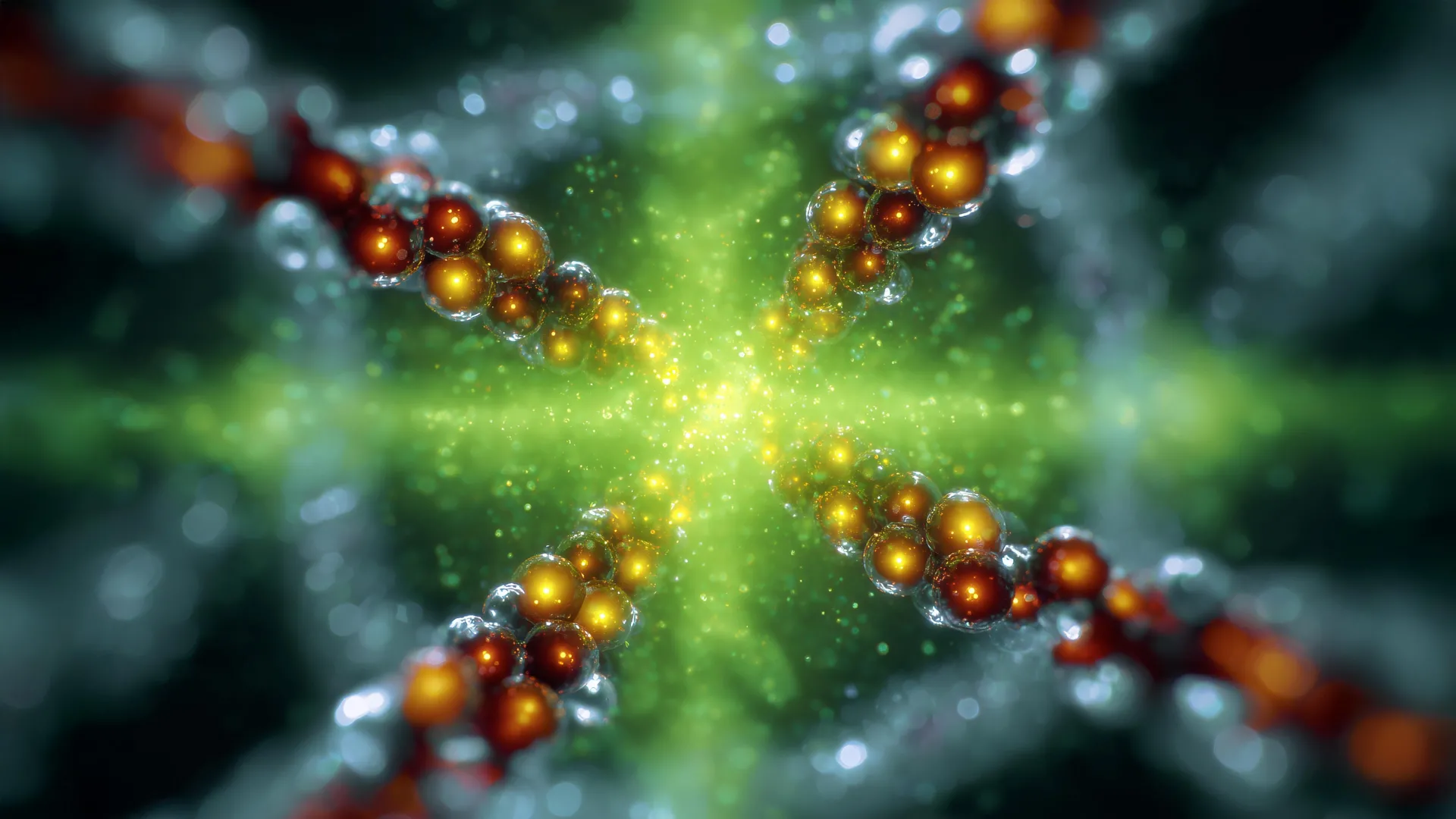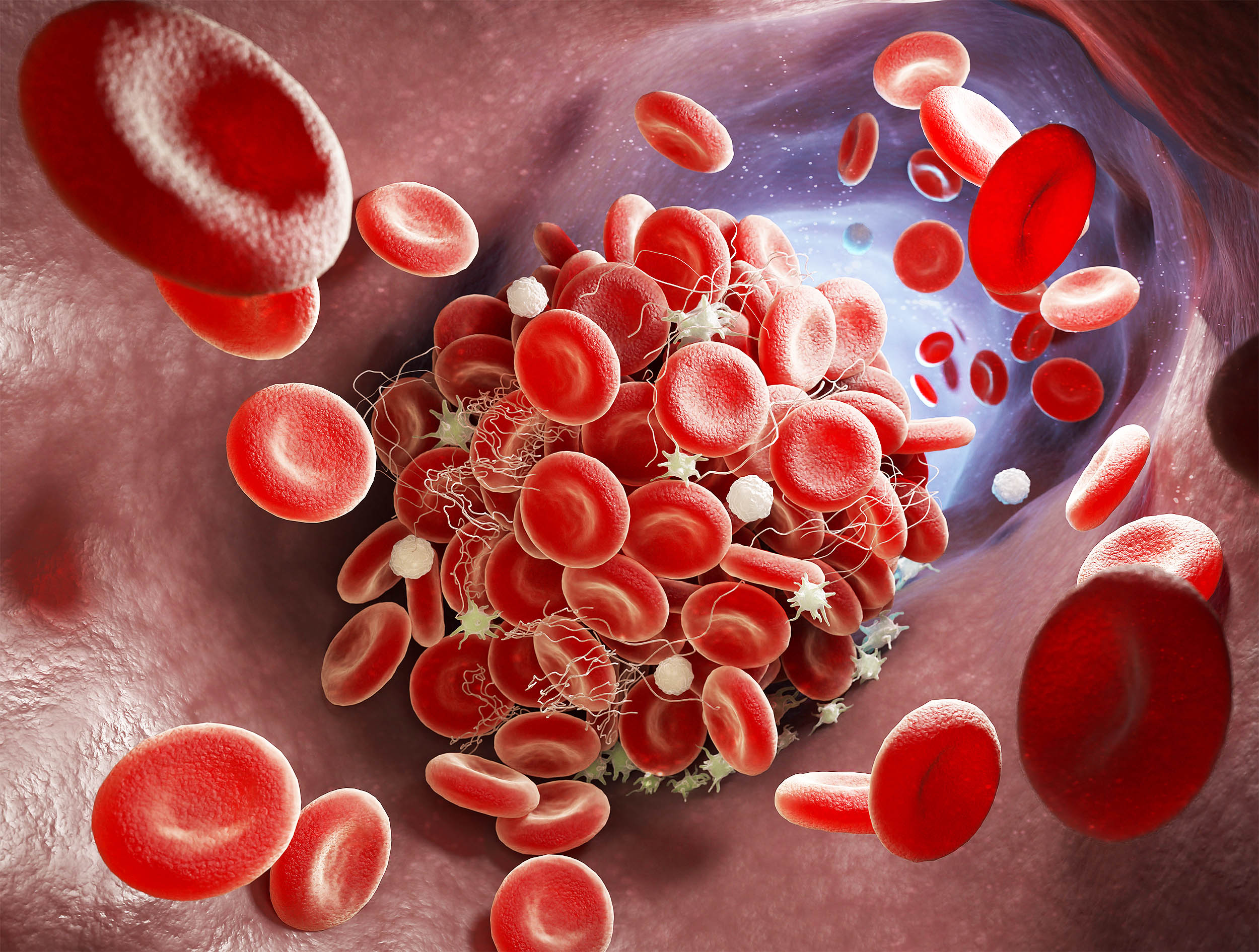Genomes contain the complete library of information required to build and maintain a living organism — the figurative blueprints of life. In eukaryotes, genomes are stored in the nuclei, where they are organized into chromosomes. A eukaryote is an organism whose cells have a nucleus surrounded by a membrane: plants, animals, fungi and many microbes are eukaryotes.
The human genome, for example, is organized in 23 chromosomes, each containing a portion of the complete genetic code. Until recently, it has always been assumed that each nucleus contains at least a complete set of chromosomes, and thus the “one nucleus, one full genome” rule.
However, our research has revealed that in two species of fungi, their genomes can be split across multiple nuclei, with each nucleus receiving only part of the total chromosomes.
A surprising discovery
(Rasbak/Wikimedia Commons), CC BY-SA
Our laboratory at the University of British Columbia studies the fungus Sclerotinia sclerotiorum, which is a soil-borne pathogen causing stem rot or white mold in various crop plants, including canola, soybean and sunflower.
Despite its impact on cash crops, S. sclerotiorum‘s genetics and cell biology are not well understood.
While trying to better understand the biology of this fungus, our laboratory made a startling discovery about the organization of S. sclerotiorum’s 16 chromosomes during cell division and reproduction.
Most eukaryotic cells are diploid, meaning the nucleus contains two copies of each different chromosome. In many fungi, such as baker’s yeast, reproduction begins with a parent diploid cell dividing to form haploid spore cells with one nucleus housing one copy of each chromosome.
However, S. sclerotiorum spores, known as ascospores, each contain two separate nuclei. Previously, it was assumed that each nucleus was haploid, containing the full suite of 16 chromosomes. This would mean that each ascospore contains a total of 32 chromosomes, similar to a diploid cell.
Using fluorescent microscopy, we were able to directly count the number of chromosomes present in a single ascospore. Remarkably, we consistently observed only 16 chromosomes per ascospore, in conflict with the 32 predicted by the current “one nucleus, one full genome” theory.
Additionally, we used fluorescent probes to label specific chromosomes, and found that the two nuclei in an ascospore contain distinct chromosomes. Ascospores contain one set of 16 chromosomes divided across two nuclei, rather than each nucleus containing a complete set of chromosomes.
An irregular manner
The next question we asked was whether the 16 chromosomes are randomly assorted between the two nuclei, or whether this genomic division follows a regular pattern.
To answer this, we separated individual nuclei and determined which chromosomes were present through polymerase chain reaction (PCR) analysis. We found that chromosome composition varies among nuclei, suggesting the division of chromosomes between nuclei is in an irregular manner.
Intrigued, we sought to investigate whether similar phenomenon occurs in other fungi. Botrytis cinerea is another species of plant pathogenic fungi in the same family as S. sclerotiorum.
B. cinerea produces conidial spores typically with four to six nuclei, rather than the two regularly observed in ascospores of S. sclerotiorum. Using similar methods, we found that the 18 chromosomes in the B. cinerea genome are similarly split across nuclei, with each nucleus generally carrying three to eight chromosomes.
This observation showed that haploid genome “splitting” across nuclei occurs in multiple plant pathogenic fungi. However, whether this phenomenon is wider spread across fungal families, or even other eukaryotes, requires further study.
An unknown mechanism
The observation that the S. sclerotiorum and B. cinerea haploid genomes are divided across nuclei raises questions about how this separation plays a role in the rest of the fungal life cycle.
In order to produce the next generation, these fungi need to reform a diploid cell with the full suite of chromosomes, from which new ascospores can be produced. Presumably, this requires the fusion of nuclei with complementary chromosomes to reunite the genome. So how do these fungi ensure that the correct nuclei fuse?
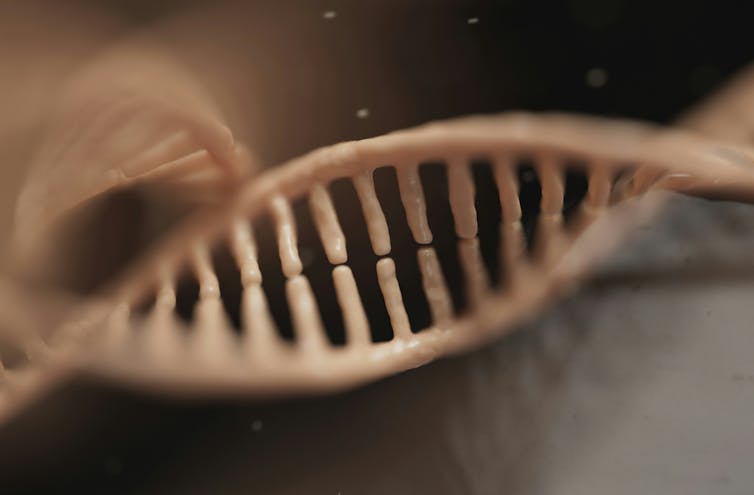
(Planet Volumes/Unsplash+)
Perhaps the simplest explanation would be one of viability selection: nuclei may fuse randomly, but only those with a complete genome would produce viable ascospores. This seems inefficient, and a more attractive scenario would involve some structure or mechanism to keep complementary nuclei together after the initial division, allowing them to easily reassemble later in the fungal life cycle.
We hope our future work will provide answers to these fascinating questions, and help broaden our understanding of the fundamental dynamics of nuclei and their genomes. This improved understanding will enable dramatic revolutions in gene editing, allowing researchers to manipulate chromosomes and nuclei at will.
